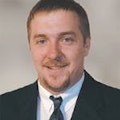The topics of technician recruitment, training and retention are always front and center in the minds of collision repair facility operators. These important technician issues fill the pages of this month's ABRN.
...First, give a read to our roundtable discussion on recruitment and retention issues starting on page 34 of this issue. We've asked several key leaders in the movement how to better attract and train new technicians to our industry how they hope to improve the lot of the average collision repair facility. I think you'll find their answers insightful and thought provoking.
At the Society of Collision Repair Specialist's (SCRS) Industry Issues Forum in March, finding qualified techs was cited as the most pressing issue facing repairers by those who attended the meeting. There's nothing new in this fact, but it is clear evidence that attention is again being refocused on the importance of technicians for the future success of the industry.
To further delve into the issue of training and recruitment, in our news section you will see several articles about I-CAR, the independent collision repairer's main source of ongoing training, and the organization's local and international operations. The I-CAR International Board of Directors recently announced the appointment of Tom McGee as executive vice president and chief executive officer of the organization. He will succeed Tom Mack, whose contract is up this month.
The board should be commended on its choice of a successor to Mack. McGee's technical credentials are impeccable and his understanding of I-CAR and its role in the industry will be crucial as he builds upon the foundation left by Mack, and strengthens and expands the organization's capabilities.
In other I-CAR news, we detail the continuing efforts by the organization to deliver its welding certification examination around the country. The first-time examination fail rate is still entirely too high, but more technicians are taking and passing the exam overall. Eventually, as the pool of certified welding technicians increases, employing a certified welder should be incorporated into the I-CAR Gold Class requirements and the various referral network programs. The Collision Industry Conference (CIC) has already included the employment of a technician certified in welding, either through I-CAR or the American Welding Society, in its "Class A" shop definition.
We also examine the efforts of the Jacksonville, Fla., I-CAR committee to promote training to both consumers and shops in the community. This group of shop operators and insurers has proven their innovation and determination to get the message out about the importance of training to vehicle owners and repair facilities. They are a perfect example of how insurers and shops can put aside their differences and work toward a better industry.
The examples are just a few in this issue that touch on the critical means of attracting people to our industry. Many of the details surrounding technician recruitment, training and retention have not changed in the past decade, nor will they in the coming years. The complex nature of economics, public policy and human perception involved in the issue of technician availability will provide a moving target. The need to find the best people for your business is not a one-time battle you win, it's an ongoing challenge that requires a sustained commitment of time and resources.
In the coming months, you will see more coverage in the pages of ABRN detailing the efforts of collision repair business operators, just like yourself, who have taken the initiative to find the people they need for their operations to succeed. Through this focused coverage, we believe you'll find the tools and ideas you need to improve your recruitment programs, or spur your own innovations.
About the Author

Russell Thrall III
Former ABRN Editor-in-Chief Russell Thrall, a second-generation collision repairer, has experienced the shop from the bottom up, starting as a clean up person and working his way to assistant manager by age 17. Thrall joined the staff of Chilton's Automotive Body Repair News in 1991 as technical editor and as senior editor in 1992. From 1993 through 2000, Thrall served as editor of Collision Repair Industry INSIGHT. Thrall returned to the staff of ABRN in June 2000 as editor-in-chief of the industry's largest monthly trade magazine. Thrall was a frequent speaker at industry events including the Collision Industry Conference (CIC), NACE, and numerous other local and regional events. He served as co-chairman of the Collision Industry Conference Electronic Commerce committee and is a member of the Board of Directors of the National Auto Body Council.